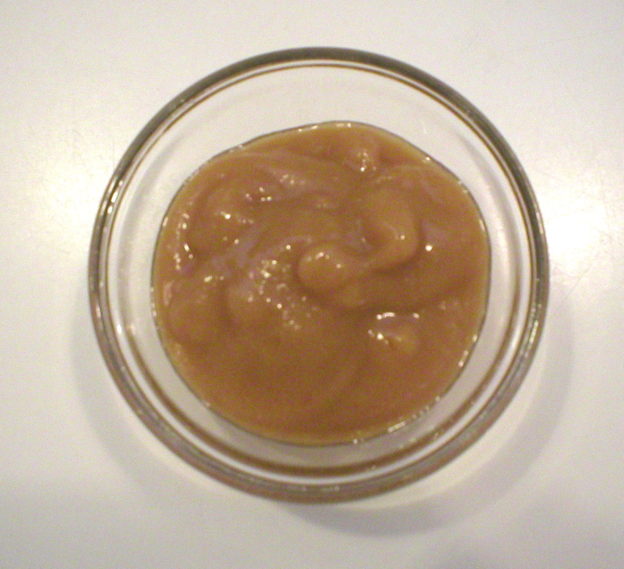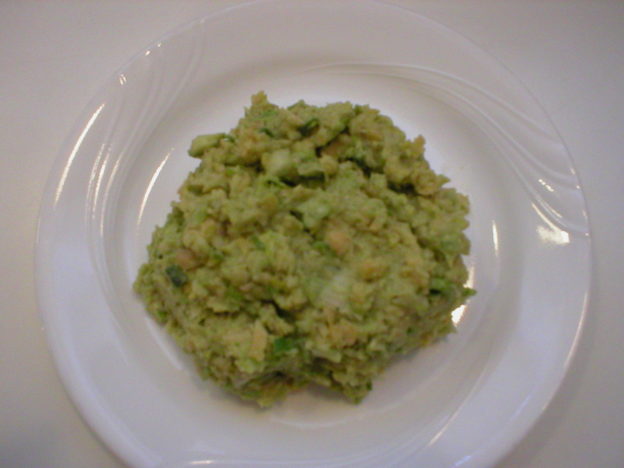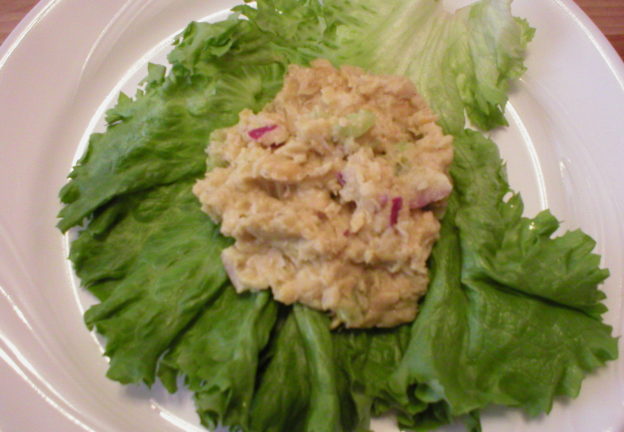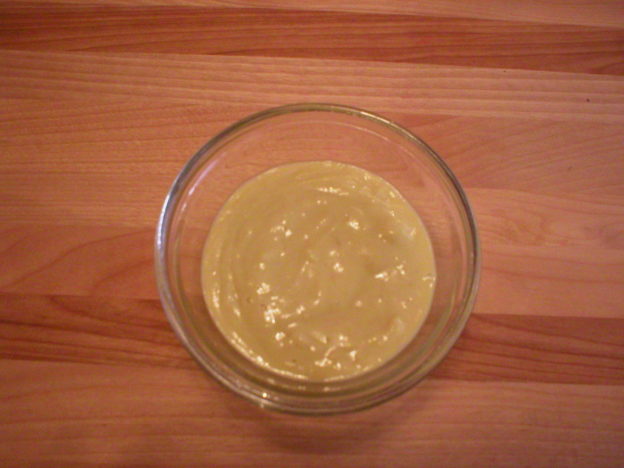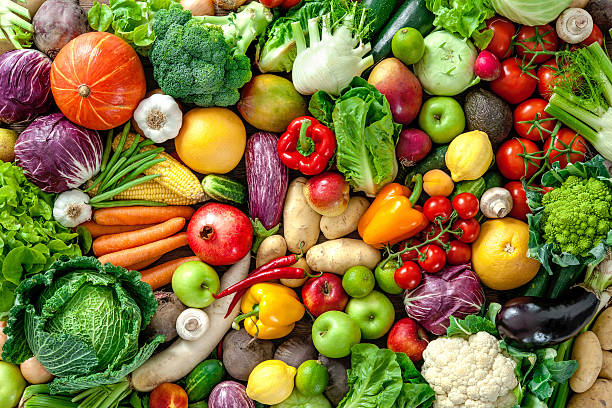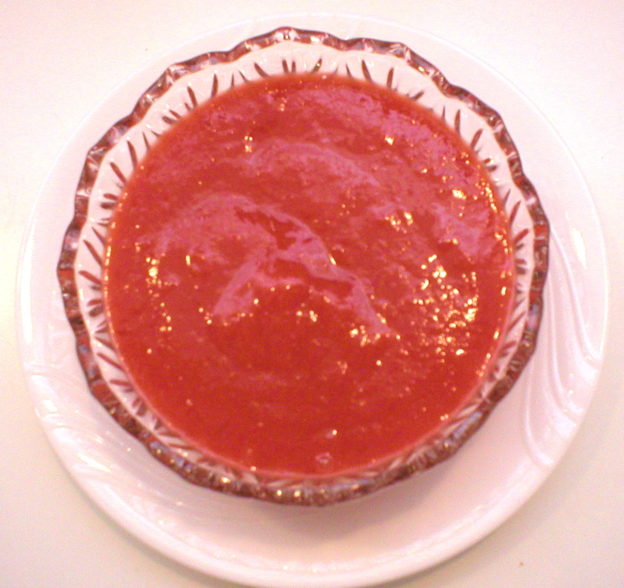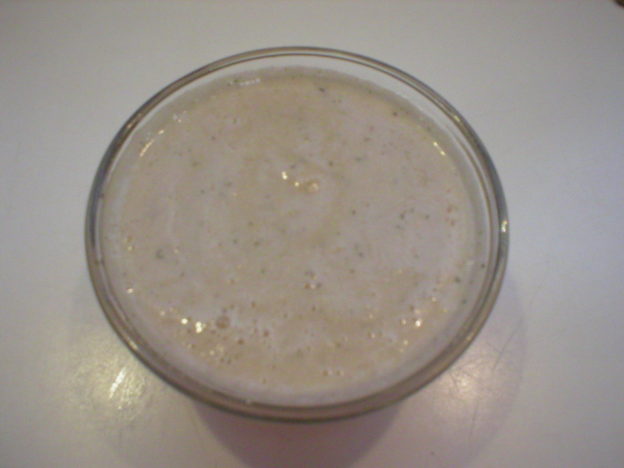We all know we need to eat more plant foods…more fruits and vegetables, in particular. Most Americans don’t eat the recommended number of servings of these important foods yet they know they should. If you’re among that crowd and are looking for ways to include more plant foods into your day, I have some easy ideas for you to try.
Effective Way to Make Changes
First, remember that long-time habits cannot all be changed overnight (at least not permanently). The easiest way to make permanent change is to do it a little at a time. (Remember the saying, “Inch by inch, it’s a cinch; yard by yard, it’s hard.”) Pick something that’s do-able for you (such as always adding some type of fruit to your breakfast), make the change, and stick with it until it becomes second-nature to you…until you do it without thinking about it, and then you’re there! You’ve achieved that goal!
Next, keep that new habit and find something else to change in a positive way. Maybe find another way to add a vegetable to your lunch or to a snack food. Repeat the same process. Keep moving forward with this tactic, adding new changes when the others become a habit to you and they are “automatic.” Over time you’ll find that you’ve transformed your life (or at least your diet) for the good. Here are some ideas for adding more fruits and vegetables to your foods…
Breakfast
* Add fruit to cereal.
* Add fruit to yogurt and make it part of your breakfast.
* Add vegetables to an omelet. Mushrooms, bell peppers, onions, shredded carrots, greens (like kale), and tomatoes all blend well with eggs.
* Add fruit and greens (such as spinach) to a breakfast smoothie.
* Try a savory vegetable pancake. Sauté onions, carrots, spinach, and even mushrooms, then add them to a savory (not sweet) pancake batter. Cook as usual and enjoy (without the maple syrup). If you really want a topping, try unsweetened applesauce.
* Add diced apple to hot oatmeal or other porridge.
* Make a 100% fruit puree in advance to have available in the refrigerator. Top morning oatmeal with it.
* Is your morning time short? Try overnight oats with added berries. Add other fruits in the morning and you’ll have breakfast in no time.
* Try a loaded sweet potato for breakfast. Bake or boil it in advance, then warm it on the stove or in the microwave. Or, if time allows, pierce it and microwave it until it’s soft. Split it and fill the cavity with chopped nuts or your favorite nut butter and chopped fruit.
* Or fill a cooked sweet potato with scrambled eggs cooked with veggies such as sautéed onions, carrots, and chopped spinach.
* Sauté assorted vegetables such as kale, carrots, broccoli florets, mushrooms, and butternut squash. Add some beans, or top them with a soft-boiled egg. Have some toast, a side of cooked grain or even oatmeal.
* Add some sautéed vegetables to a breakfast burrito.
Lunch or Supper
* Enjoy a vegetable salad with your lunch (or supper), or as the whole meal. Add some fruit for sweetness, flavor and variety.
* Add as many vegetables as you can to a lunchtime sandwich. Lettuce, tomatoes, cucumbers, sprouts, avocado, and spinach would all work well.
* Have some veggie sticks with or without dip on the side. Jicama, carrots, cucumbers, celery, bell peppers, grape tomatoes, radishes, and even sugar snap peas and snow peas. Most offer great crunch and chewing experience while the dip can add variety in flavors. This is a healthful alternative to chips.
* Enjoy a piece of fresh fruit for dessert.
* Top meat, chicken or fish with a salsa of choice.
* Add shredded carrots, zucchini, or yellow squash to meatloaf, casseroles, and burgers (both meat and meatless).
* Add shredded vegetables to pasta sauce as it cooks. Carrots, bell peppers, mushrooms, zucchini, and yellow squash all blend well in tomato sauce.
* Add vegetables as toppings to your pizza.
* If you’re a meat eater, plan a meatless meal for one or two days a week. Plan a meal around a vegetable-based soup, stir-fry, or casserole. Add beans or legumes of choice for added protein.
* Use fresh vegetable or fruit slices as a garnish on your plate. Make a point of eating them rather than just enjoying their looks next to other foods.
* Stuff acorn (or other) squash, bell peppers, hollowed out zucchini, or spaghetti squash with a vegetable-bean mixture and enjoy that for supper. Be sure to eat the “bowl” along with the stuffing!
* Add vegetables to lasagna layers. Fresh spinach, finely shredded carrot, thinly sliced yellow squash or zucchini, and finely chopped steamed kale would all work well.
* When cooking rice or another grain for a side dish, add some frozen peas and even finely shredded carrots during the last few minutes of cooking time. Your grain will be embellished with vegetables for added color, nutrition and flavor. Not a fan of peas? Try finely shredded kale or spinach or something else that sounds good to you.
* Need a meal in a hurry? Make a quick quesadilla by stir-steaming or stir-frying some veggies (use a pack of assorted frozen (and thawed in a colander under running water) vegetables to make it even faster). Add in a handful of cooked beans, if desired. Place them on a tortilla and sprinkle with cheese of choice. Fold the tortilla, heat the tortilla on a frying pan to crisp it up some, and enjoy!
* Try cauliflower rice as a way to add more veggies to your meal. We’re not knocking rice here, just adding veggies. If you want the real thing (rice, that is), you could make a mixture of half rice and half cauliflower rice.
* Add finely chopped vegetables to polenta.
* If you’re not a huge fan of vegetables, yet want to add more to your meals, try dressing them up with your favorite salsa, glaze or sauce.
* Add pureed cauliflower, winter squash, sweet potato, or even bell peppers into sauces, mashed potatoes and even pot pies for added flavor, nutrition, and color.
* Try thickening soups and stews with vegetables instead of cornstarch. Okra will thicken, as will starchy vegetables like potatoes. Blended corn, mashed white or sweet potatoes, and pureed cooked root vegetables such as carrots may also do the trick. Although not “vegetables,” pureed beans in liquid can also be used to thicken soups. Blend equal parts of beans and soup broth. Add the slurry back to the pot and your soup should thicken.
* Try adding mashed, roasted cauliflower to mashed potatoes. This will make the potatoes healthier and creamier.
* Try a lettuce wrap. Make your usual taco, tortilla, or sandwich filling (but of course, with added veggies), then wrap it in a stack of lettuce leaves instead. Or take it one step further and try large collard green leaves, turnip green leaves, or flat-leaf kale leaves. Yet another way to add more veggies to your meal!
* Try a fish-less sushi. Use mushrooms, cucumbers, and avocado along with the sticky rice.
* Add some finely chopped spinach to your favorite risotto. Add it toward the end of cooking time since spinach cooks really fast.
* On a cold winter day, start your meal with a small warm bowl of vegetable soup as an appetizer. You’ll get veggies in and also curb your appetite so you don’t overeat.
* On a warm summer day, start your meal with a side salad or veggies and dip. Like with the soup, you’ll get more veggies in and curb your appetite a bit.
Salads
* Add vegetables to tuna, chicken, meat, or bean salads. Tomatoes, radishes, bell peppers, onions, would all work well. Serve on a bed of lettuce or spinach (and EAT the greens!).
* Include a green salad as a side dish with lunch and/or supper. Eat this, in addition to your “side” vegetable.
* Add variety to green salads by adding other vegetables such as red or green cabbage, spinach, carrots, green peas (frozen, thawed), mushrooms, celery, radishes, cucumbers, yellow squash or zucchini, broccoli and/or cauliflower, sprouts, sugar snap peas, snow peas, bell peppers, cooked green beans, scallions, tomatoes, radicchio, or any other vegetable you want.
* For a little sweetness, add some fruit to your green salads, such as pineapple, orange slices, grapes, berries of any sort, diced apples, diced pears, diced peaches, or mango cubes.
* Embrace “slaws.” Cole slaw doesn’t have to be limited to cabbage and mayonnaise. Red cabbage, green cabbage, shredded Brussels sprouts, grated kohlrabi, grated carrots, pineapple tidbits, grated apple, peanuts, hazelnuts, dried cranberries, raisins, celery root, beets, radishes, turnips, parsnips, rutabagas, and even citrus fruits can all be incorporated into assorted vegetable slaws. Experiment and get creative with this one!
* Don’t get stuck in a rut with your salads. Vary your greens. There are plenty to choose from: iceberg, romaine, green leafy lettuce, red leaf lettuce, specialty lettuces, spring mix, baby green mixes, spinach, kale, shredded cabbage, even shredded collard greens…explore what’s available in your local store or farm market!
* Don’t just vary your bed of greens, but vary your toppings too! There are lots of possibilities including tomatoes, shredded carrots, celery, bell peppers, broccoli pieces, cauliflower pieces, cucumbers, cooked green beans, frozen (and thawed) green peas, sliced olives, raw yellow squash or zucchini slices, beet slices (pickled, steamed, or raw), asparagus (raw, steamed or sautéed), parsnips (raw, steamed or sautéed), roasted Brussels sprouts (or even raw), corn (canned, raw, frozen and thawed, steamed or boiled), shaved kohlrabi, jicama, shaved celery root, natural sauerkraut or other fermented vegetables (homemade is mild tasting and less pungent than the canned variety), onions (all varieties), butternut squash (raw, cubed and roasted, steamed, or sautéed).
* Don’t toss the broccoli stems! They’re perfectly edible. If the outer layer is too tough for you, shave it off with a vegetable peeler and save it for vegetable broth. Slice the remaining stalk into your salad for an added vegetable. They are crunchy but not tough, and taste like broccoli. Why toss them???
* Try making a vegetable salad without the greens, just for something different. Load it with tomatoes, shredded carrots, onions, bell peppers, cucumbers, sugar snap peas for sweetness, and any other veggies you want. Top it with your favorite dressing and enjoy!
Snacks and Other Foods
* Have some fruits and/or vegetable pieces available to snack on whenever you have a hunger urge. Sliced bell peppers, carrot and celery sticks, sliced radishes, sliced jicama, broccoli or cauliflower florets, whole cherry or grape tomatoes, raw sugar snap peas, raw snow peas, and sliced yellow squash or zucchini would all work well. Include some whole baby cucumbers for an easy grab and go, crunchy snack. For fruit, peeled Clementine oranges, grapes, apples, pears, sliced kiwi, cubed mango, diced pineapple, strawberries, plums, peaches, cherries (when they’re in season), and bananas would all work well for a quick and handy snack. On the run? Pack them in a to-go bag and you’ll have them whenever your “snack-attack” hits you.
* Boil a whole sweet potato with the peel on. Allow it to cool then store it in the refrigerator. When hungry, cut off a slice or two and enjoy it just as it is…plain and simple. When you get used to eating foods without added sugars, a boiled sweet potato will actually taste sweet to you.
* Add shredded fruits and vegetables to baked goods like quick breads and muffins. Shredded apples, carrots, yellow squash, and zucchini would all work well.
* Use a fruit puree as a dip on a fruit and cheese tray. Pureed raspberries and/or pineapple would be good.
* Use a vegetable puree as a dip on a vegetable tray. (Example: Roasted red bell peppers blended with a little balsamic vinegar.)
* Spread your favorite nut butter on apple or pear slices for a delicious, satisfying snack.
* Add mixed berries to some vanilla yogurt for a filling snack.
* Stuff celery sticks with your favorite nut butter.
* Enjoy a slice of cantaloupe topped with cashew cream or yogurt.
* Try spreading a tortilla or flatbread with your favorite nut butter, top it with thinly sliced banana and a few raisins. Roll it up and enjoy it right away, or wrap it for a to-go snack.
* Add fresh vegetable/fruit juice to your day, not as a meal replacer, but as a supplement.
Desserts
* Instead of making overly sweetened desserts like pie, cake and cookies, enjoy a piece of fresh fruit for dessert. When your taste buds get used to not being overrun with excess sugars, a piece of fruit will actually be refreshing and taste sweet.
* Puree fresh fruit to use as a dressing over another dessert such as cake, pie, pudding, and ice cream.
* Include fruit pieces or fruit puree into desserts like parfaits and puddings.
* Stew or poach pears with a little sweetener (sugar, honey, or maple syrup) and spice (ginger, cinnamon, cloves, star anise) for an elegant dessert.
* Try banana “nice cream” by blending a frozen (peeled) banana. Period. It’s delicious as it is, but can be embellished any way you want. When blending, add in a little vanilla extract, cocoa powder, or another fruit. It can be sweetened with whatever you want, if desired. Top it with chopped nuts, dried coconut, chocolate chips or your favorite fruit puree and you have a delicious, healthy, fruity dessert ready in very little time.
* For a refreshing dessert on a hot day, swirl a freshly made fruit puree of your choice into your favorite yogurt. Pour into popsicle molds and freeze.
* Make a parfait layering pudding or yogurt with 100% fruit puree, chopped fresh fruit of choice, and granola.
* Top your favorite pudding with a fruit puree (unsweetened, of course!), or small chunks of fresh fruit of choice.
* Make a refreshing fruit salad with whatever fruit you have available. Add a topping of 100% fruit puree, or stir in some pineapple tidbits with juice, then sprinkle with unsweetened coconut.
Plan Ahead
* If you know your time will be short during the work week, take some time on the weekend or one evening to prepare some fruits and veggies in advance. For instance, salad greens can be washed, spun dry, chopped, and stored in the refrigerator, ready for fast salad assembly any time you need it. Other salad vegetables may also be chopped in advance and stored in a covered container in the refrigerator for faster salad making.
* On a day off, make a large pot of soup that’s loaded with assorted vegetables. In fact, double the veggies (or at least increase the amount) called for in the recipe (if possible). This will increase the “hearty factor” of the soup along with the nutritional punch. Divide it into containers for grab-and-go lunches for the week, or for quick suppers when time is short.
* “Ditto” the above suggestion for making a large casserole with extra veggies on a day off. You’ll have lunches (or easy suppers) ready to go for the week.
* If you’re cooking something in the oven and have space, add some sweet potatoes wherever there’s room so they can bake at the same time. Enjoy them with meals during the week, or save them for special, sweet and satisfying snacks when needed.
* Keep frozen vegetables in the freezer. They can be ready at a moment’s notice to be used in a number of ways. Add them to soups, casseroles, stir-fries, quiches, pasta dishes, and rice or grain dishes. Thaw frozen vegetables like peas and carrots and add them to a green salad for extra nutrients, flavor, and variety.
* When grocery shopping, look for something new that you haven’t tried before in the produce isle. Make a point of including that in at least one dish during the coming week.
* Keep frozen assorted fruit in the freezer. This is handy especially when they’re out of season or you don’t have time to get to the store. They can be included in smoothies, blended into desserts, or thawed and used in whatever way needed.
* If you’ll be going off somewhere for the day, pack ready-to-go snack bags of easy to munch on veggies, like baby carrots, grape tomatoes, cucumber slices or baby whole cucumbers, sugar snap peas, snow peas, celery sticks, bell pepper strips, and maybe some easy to eat fruit like grapes, a plum, or a banana.
With all the suggestions above, I hope this gives you some ideas as to what will work for you in adding more fruits and vegetables to your day. If you have suggestions not mentioned above, please feel free to share them below! I’d love to hear from you!
Judi
About Judi
Julia W. Klee (Judi) began her journey enjoying “all things food” in elementary school when she started preparing meals for her family. That love of food blossomed into a quest to learn more and more about health and wellness as related to nutrition. She went on to earn a BS Degree in Food and Nutrition, then an MS Degree in Nutrition. She has taught nutrition and related courses at the college level to pre-nursing and exercise science students. Her hunger to learn didn’t stop upon graduation from college. She continues to research on a regular basis about nutrition as it relates to health. Her hope is to help as many people as possible to enjoy foods that promote health and wellness.

